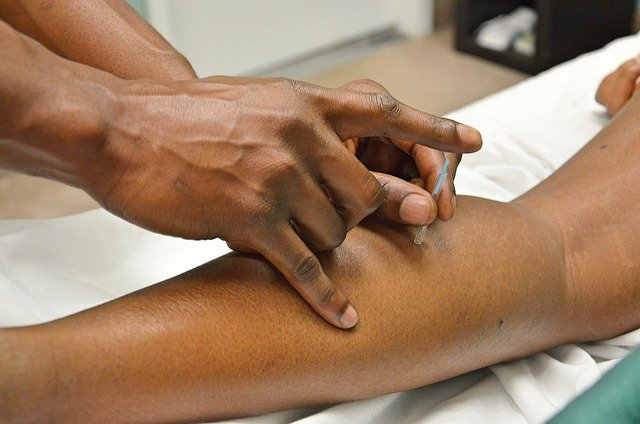Platelet-Rich Plasma: A Breakthrough in Hair Restoration
Platelet-rich plasma (PRP) therapy has emerged as a groundbreaking treatment in the field of hair restoration, offering hope to millions suffering from hair loss. This innovative approach harnesses the body's own healing mechanisms to stimulate hair growth and improve scalp health. Initially developed for orthopedic surgery and sports medicine, PRP has found its way into the realm of dermatology and trichology, revolutionizing the way we approach hair loss treatment. As a non-surgical option, PRP therapy has gained popularity among both men and women seeking natural solutions to thinning hair and baldness. Its ability to rejuvenate dormant hair follicles and enhance the overall quality of existing hair has made it a sought-after treatment in clinics worldwide.

The Evolution of PRP in Hair Restoration
The application of PRP in hair restoration has its roots in the early 2000s when researchers began exploring its potential beyond orthopedics. Initial studies showed promising results in promoting wound healing and tissue regeneration. As the technique was refined, dermatologists and hair restoration specialists began incorporating PRP into their treatment protocols. Over the past decade, numerous clinical trials have demonstrated the efficacy of PRP in treating various types of hair loss, including androgenetic alopecia and alopecia areata.
The PRP Treatment Process
A typical PRP hair restoration session involves several steps. First, blood is drawn from the patient, usually from the arm. The blood sample is then processed in a centrifuge to isolate the platelet-rich plasma. This concentrated plasma is then carefully injected into specific areas of the scalp using fine needles. The entire process usually takes about an hour, and patients can typically resume their normal activities immediately afterward. Most treatment plans involve a series of sessions spaced several weeks apart, with maintenance treatments recommended every 6-12 months.
Benefits and Limitations of PRP Hair Therapy
One of the most significant advantages of PRP therapy is its autologous nature – using the patient’s own blood eliminates the risk of allergic reactions or rejection. The treatment is minimally invasive, with little to no downtime, making it an attractive option for those who cannot undergo more extensive surgical procedures. PRP has shown particularly promising results in treating androgenetic alopecia, especially when combined with other hair loss treatments like minoxidil or low-level laser therapy.
However, it’s important to note that PRP is not a miracle cure for all types of hair loss. Its effectiveness can vary depending on factors such as the patient’s age, the extent of hair loss, and the underlying cause. Additionally, multiple sessions are typically required to achieve noticeable results, and the treatment may not be suitable for individuals with certain medical conditions or those taking blood-thinning medications.
The Future of PRP in Hair Care
As research in regenerative medicine continues to advance, the potential applications of PRP in hair care are expanding. Scientists are exploring ways to enhance the efficacy of PRP treatments, such as combining them with stem cell therapy or developing more targeted delivery methods. There is also growing interest in using PRP for preventive hair care, potentially slowing down the progression of hair loss in individuals genetically predisposed to baldness.
Comparing PRP to Other Hair Loss Treatments
In the landscape of hair restoration, PRP occupies a unique position. Unlike hair transplant surgery, which involves relocating hair follicles from one part of the scalp to another, PRP aims to rejuvenate existing follicles and stimulate new growth. Compared to topical treatments like minoxidil or oral medications like finasteride, PRP offers a more localized approach with potentially fewer systemic side effects. However, it’s worth noting that many hair restoration specialists recommend combining PRP with other treatments for optimal results.
The Role of Diet and Lifestyle in PRP Outcomes
While PRP therapy can be highly effective, its success is often influenced by the patient’s overall health and lifestyle. A balanced diet rich in proteins, vitamins, and minerals is crucial for supporting hair growth. Stress management, adequate sleep, and avoiding harsh chemical treatments can also enhance the outcomes of PRP therapy. Some practitioners recommend supplements like biotin or saw palmetto to complement PRP treatments, although more research is needed to confirm their efficacy.
Addressing Common Concerns and Misconceptions
Despite its growing popularity, PRP therapy for hair restoration is still surrounded by some misconceptions. One common concern is the pain associated with the treatment. While the procedure does involve injections, most patients report only mild discomfort, which can be managed with topical anesthetics. Another misconception is the immediacy of results – it’s important for patients to understand that visible improvements typically take several months to appear. Additionally, while PRP is generally safe, it’s not without risks, and potential side effects like scalp tenderness or mild swelling should be discussed with a healthcare provider.
In conclusion, platelet-rich plasma therapy represents a significant advancement in the field of hair restoration. Its ability to harness the body’s natural healing processes offers a promising alternative for those seeking non-surgical solutions to hair loss. As research continues and techniques are refined, PRP is likely to play an increasingly important role in both treating and preventing hair loss. However, it’s crucial for individuals considering this treatment to consult with qualified professionals and maintain realistic expectations about outcomes. With ongoing advancements and a growing body of clinical evidence, PRP therapy is poised to remain at the forefront of hair restoration techniques in the years to come.




